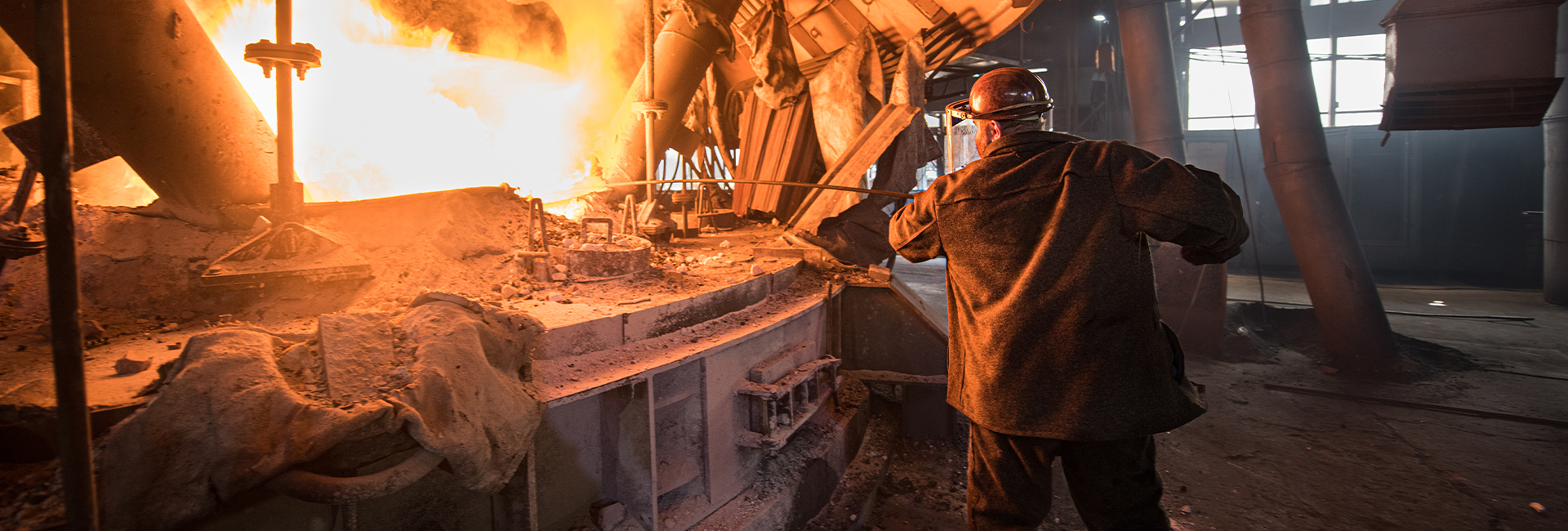The construction industry is experiencing a surge in demand for high-strength, durable, and resilient steel, driven by rapid urbanisation. Thermo-Mechanically Treated (TMT) bars are one of the strongest and most flexible steel products. They offer remarkable resistance to seismic forces, making them indispensable in construction. Leading TMT bar manufacturers like Sree Metaliks employ refined steel-making processes to ensure quality and strength, including the Ladle Refining Furnace (LRF), which is essential for the refining and homogenising of the steel.
|
Table of Content
|
In modern metallurgy, the ladle furnace is a specially designed metallurgical furnace that integrates refining with alloying. Its function is to raise the quality of molten steel by controlling the chemistry and temperature before it is processed into billets. This advanced steelmaking step ensures the exceptional mechanical properties required by modern construction are met.
Also Read: What is TMT Bar: A Step-by-Step Guide to Their Advantages
What is a Ladle Refining Furnace (LRF)?
The ladle refining furnace is a secondary metallurgical unit used after primary steelmaking processes like the blast furnace or electric arc furnace. While the primary furnace melts and reduces raw materials into crude steel, the refining furnace provides fine-tuning.
The LRF process involves heating, desulfurization, deoxidation, and homogenization of molten steel. By precisely adjusting the chemical composition and removing impurities, the furnace ensures consistency, which is critical for producing TMT bars of superior quality. In simple terms, the Ladle Refining Furnace (LRF) acts as a bridge between crude steelmaking and casting, ensuring that the steel meets stringent quality parameters.
Importance of Ladle Refining Furnace in Steel Making
The introduction of LRF technology revolutionised steel making, especially for long products like TMT bars. The LRF process ensures that the steel has:
- Better purity levels: Removal of sulfur, phosphorus, and non-metallic inclusions.
- Consistent chemical composition: Precise control of alloying elements for uniformity.
- Temperature control: Steel is maintained at the right temperature for casting.
- Improved mechanical properties: Enhanced strength, ductility, and weldability.
In LRF steel making, filling production quotas is just one part of the job, ensuring the quality of the end product is just as important. Manufacturers such as Sree Metaliks focus on meeting quality standards during the last stages of refining.
The Ladle Furnace Process Explained
The ladle furnace process, as defined, features the subsequent operations involved in the processing of crude molten steel, as it mainly focuses on refining it. The steps typically include:
1. Molten Steel Transfe
- Crude molten steel is fetched from the primary furnace and positioned in the ladle for pouring.
- The ladle serves as both a container and a vessel for refining the steel.
2. Heating through Electrodes
- The ladle holds graphite electrodes that will heat the steel to a certain temperature.
- This helps maintain the refining temperature for the steel.
3. Desulfurization and Deoxidation
- Sulfur and oxygen impurities are removed by adding certain fluxes and alloys.
- This is one of the steps that enhances the toughness and strength of steel.
4. Alloying and Composition Control
- Certain alloying elements are added, such as carbon, manganese, and chromium.
- This ensures alloy steel will have uniform, precise, and acceptable chemical properties.
5. Inclusion Modification
- Enhancing the ductility as well as toughness of steel can be achieved by altering non-metallic inclusions.
6. Temperature Homogenization
- The steel undergoes a non-mechanical stirring process to equalise uneven temperature.
7. Casting Preparations
- The continuous casting machine receives molten steel to produce billets.
These billets undergo further processing to be converted into TMT rods. The TMT bars are further enhanced in quality and durability due to the strength and purity achieved during the LRF process.
Benefits of Adopting LRF Technology for TMT Bar Production
The LRF technology contributes multiple advantages in the refining process of steel long products such as TMT bars.
High Purity
The steel quality is critical for the structural strength of constructions. Ladle furnaces are able to effectively separate impurities to achieve high-purity steel.
Improved Mechanical Properties
The TMT bars are able to achieve improved tensile strength, elongation, and bendability because of the deliberate control over the alloy composition.
Consistency
The quality of the TMT bars in each batch produced is consistent due to the homogeneity achieved through the LRF process.
Production Versatility
The varied construction requirements can be catered to as LRF steel making enables the production of specialised grades of TMT bars.
Meeting Required Safety Standards
Steel produced in an LRF furnace is compliant with national and international safety and durability requirements, making the stringent safety and durability requirements seamless.
Also Read: Ladle Refining Furnace: A Detailed Guide
Also Read: Forging the Future: High-Strength Steel Revolutionising TMT Manufacturing
Why LRF is Critical for TMT Bar Manufacturers
High-rise buildings, bridges, and highways are examples of critical and infrastructural projects for which TMT bars are utilised. Such projects demand uncompromised quality and reliability from manufacturers. As a prominent TMT bar manufacturer, Sree Metaliks adopts the LRF technology to ensure the production meets the following quality standards:
- High ductility to endure seismic and dynamic loads.
- Corrosion resistance to withstand harsh environmental conditions.
- Consistency to mitigate construction risks.
With the ladle refining furnace technology, Sree Metaliks can guarantee the strength, reliability, and performance of the TMT bars for seamless construction.
LRF Steel Making and Its Role in Producing Superior TMT Bars
In modern steel making, the paradigm has shifted from producing in bulk to producing steel that meets particular performance benchmarks. With the LRF Process, the performance of TMT bars can be improved by:
- Improves strength by reducing impurities and enhances ductility through precise carbon control.
- Consistent and uniform heat treatment during rolling and quenching of TMT bars.
Safety and performance standards for construction TMT bars are adhered to through the ladle furnace process.
Sree Metaliks and the Use of LRF Technology
Sree Metaliks has gained recognition as a TMT bar manufacturer and has adopted LRF technology to improve production processes. Meeting modern infrastructural demands through quality TMT bars is the aim of Sree Metaliks.
Through the employment of the refining furnace, Sree Metaliks is capable of maintaining:
- Uniform chemical properties in each billet.
- Consistent mechanical strength in the steel.
- Conformance of the final TMT bars to critical industry standards of durability and safety.
Trust gained in the industry is a result of their commitment to quality.
Future of Ladle Refining Furnace (LRF) in Steel Making
LRF steel making holds potential as product quality, efficiency, and environmental considerations continue to receive attention. Some important trends are:
- Energy-efficient electrodes to reduce power consumption.
- Automation in the LRF process for enhanced precision.
- AI-based monitoring systems for real-time adjustments and enhanced efficiency.
LRF technology will remain instrumental in the production of superior TMT bars as demand in construction rises.
Conclusion
The ladle refining furnace plays a pivotal role within the realm of steel making, specifically for the TMT bars, which necessitate commendable strength, ductility, and uniformity. The LRF process enhances the quality of the final product by refining crude steel through the removal of impurities, stratified composition, and controlled homogeneity.
For a reliable TMT bar manufacturer like Sree Metaliks, LRF technology enhances not only the ability to optimise productivity but also to supply TMT bars revered for their unparalleled safety and durability. The ladle furnace process ensures that TMT bars produced undergo stringent quality assurance, achieving strength, flexibility, and reliability, which are paramount for the construction of robust infrastructural undertakings.
Within the discourse on quality steel production, few technologies are as revolutionary as the refining furnace, and Sree Metaliks has positioned itself as a frontrunner to utilise this technology for advanced TMT bars of tomorrow.
For more information, please reach out to us at: Sales@sreemetaliks.com

